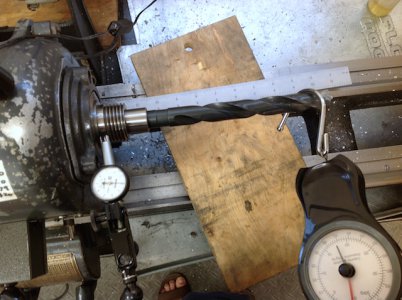- Joined
- Feb 5, 2015
- Messages
- 662
....You cannot adjust the preload on a double-row bearing.
As a Logan owner, you obviously know a lot more than me about this problem
I have an old manual for my Sheldon lathe, which is not dissimilar to a South Bend or Logan. In the manual, three different headstock configurations are shown:
- sleeve bearings, oldest configuration
- three ball bearings (one in the rear, two in front) transitional configuration
- two tapered roller bearings (one in the rear, one in front) newer machines
The ball bearing configuration, at least on the spindle shown, appears to be adjustable by doughnut shims under the bearing caps at each end of the headstock. Note that I'm NOT claiming that the Logan can be adjusted in the same manner but it is possible. Removing the bearing cap from the rear of the headstock would be a good place to start - see if any shims are visible.
eeler1, too bad you moved, I would have been happy to take a look at your machine and could have brought my Millwright buddy along. He runs a job shop in Eureka and there's not much about machinery that he doesn't know !
The last test you made sounds a lot more realistic. When you say you got chatter as you moved further away from the chuck, do you mean that the end of the work was unsupported ? If that's the case - no tailstock center or steady rest - then that's just normal flexing.
A good rule of thumb if you don't use a center or steady is that the length of the work protruding from the workholder shouldn't be greater than about 3 times the diameter.
One last thought: Your 3-jaw chuck might be bell-mouthed. If that's the case, you'd get chatter when the end of the work is unsupported, probably even when cutting close to the chuck. You'll either need a new chuck or to grind the jaws true.

